Opinion & Analysis
Wishon: “What shaft flex should I use?”

Let’s start our discussion by making one thing clear. There’s a lot to fitting the flex and bend profile of shafts — enough to write a whole book.
In asking me to write about the fitting of each of the key specs of golf clubs, GolfWRX in essence gives me a “1-pound bag” each week to offer information about each fitting spec. Covering everything about shaft flex and bend profile would be like trying to put 100 pounds of stuff into that 1-pound bag!
For those who are really into knowing as much as possible about flex and bend profile fitting in shafts, I recommend you read the three-part series I wrote for GolfWRX some time ago.
Related
- Part 1 — Taking the guesswork out of selecting shafts
- Part 2 — Taking shaft fitting from guessing to specifics
- Part 3 — Facts about shafts: What they do
For those who may not be that familiar with fitting for FLEX and for BEND PROFILE, fitting for the flex is a matter of finding a shaft with the correct swing speed rating for the golfer’s clubhead speed AND transition/tempo, while fitting the bend profile involves matching the tip stiffness design of the shaft to the golfer’s point of release.
Of all the points that an experienced club fitter has to evaluate to do a good job in the fitting of flex and bend profile, the most important one is to have accurate shaft bend profile measurement and swing speed rating data on the largest possible population of shaft models and flexes. This is because there are no standards for the flex of a shaft in the golf industry. Each golf company and shaft company is free to decide how stiff any of their letter flex codes on their shafts are to be. As such, the R flex from one company can be of the same stiffness as the S flex from another company or the A flex from a third.
Without access to a large data base of actual stiffness and swing speed rating measurements for shafts to be able to clearly know and compare the stiffness design of shafts, fitting for flex and bend profile is a matter of time consuming and frustrating trial and error. Period.
The following bend profile data graph is simply offered as an example of the type of shaft stiffness measurement data required to take shaft flex/bend profile fitting from a trial-and-error process to one of clear, succinct organization. This example graph will also prove the point about the confusion in flex due to a lack of standards in the industry.
Each of the five shafts in this graph are labeled and sold as S-flex shafts. The stiffness measurements represent a range of three full flexes, or stated another way, represent a swing speed rating difference of more than 30 mph.
With such data, the flex and bend profile fitting analysis follows these procedures:
1. Accurately measure the average clubhead speed of the golfer with a driver and a 5- or 6-iron.
2. Observe the golfer’s downswing transition and tempo and evaluate it as either:
A) Smooth/gradual/passive with little sense of acceleration.
B) Average, with some sense of force and acceleration from the transition through the downswing.
C) Forceful and aggressive, as if the golfer cannot wait to pour on the coals to accelerate the club to impact.
In simple terms, the club fitter is observing whether the golfer is more of a swinger (A), a definite hitter (C) or somewhere in between (B) with his downswing transition and tempo.
3. Observe the golfer’s point of release (i.e. the point at which the golfer begins to unhinge the wrist-cock angle on the downswing as either (1) early, (2) midway, (3) later, or (4) very late. Another way to evaluate this is to reference the point of starting the release to the hour numbers on a clock while facing the golfer.
- (1) Early: 11 to 9:30
- (2) Midway: 9:30 to 8:30
- (3 Later: 8:30 to 7:30
- (4) Very Late: 7:30 to 6:30
4. Choose shafts of the correct weight (see my story on shaft weight/total weight), which have a swing speed rating that matches to the golfer’s clubhead speed and an adjustment for their transition and tempo evaluation with a tip stiffness design that matches the golfer’s point of release.
We will use an example of a golfer with a 100 mph driver clubhead speed. The up or down adjustment in the swing speed rating and tip stiffness recommendation is the same for all other clubhead speeds.
The above procedures are done to give the club fitter A STARTING POINT for shaft flex and bend profile fitting. Suitable candidate shafts are chosen by the club fitter from which the test club hitting process begins.
Again, because the best club fitters are superb multi-taskers during the test club sessions for flex and bend profile, the club fitter is also testing for shaft weight, swing weight and continually asking the golfer for feedback with each change of head weight or shaft.
Without question, the matter of ADVANCED PLAYER SHAFT FLEX/BEND PROFILE FITTING must also include an evaluation of the golfer’s preference for feel elements and shot shape/performance related to the flex/bend profile. Experienced club fitters will ask the golfer to provide the names of shafts the golfer has used, along with the golfer’s feedback of too high, too low, good flight, too stiff feeling, too flexible feeling, just right feeling, etc.
With this information, the club fitter will access his database of shaft stiffness measurements to study as many of the golfer’s previous shafts and compare the stiffness measurements. Through this process, the club fitter will be able to know what the actual stiffness measurements are for each shaft model feedback opinion from the golfer. From this the club fitter will have a very clear picture of what the stiffness measurements need to be to best satisfy the golfer’s feel and shot shape preferences.
Again, with the right database of shaft stiffness measurements, the process of flex and bend profile fitting becomes a very organized, very orderly, and very accurate process. Without such information, shaft flex and bend profile fitting will forever be a matter of trial and error.
Related
- What length should your clubs be?
- What lofts should your clubs be?
- Face angle is crucial for a proper fitting
- The best way to fit lie angle
- How to choose the right club head design
- Tom Wishon’s keys to set makeup
- Getting the right size grip, time after time
- What shaft weight should you play?
- What swing weight should your clubs be?
- What shaft flex should I use?
This story is part of a 10-part series from Tom Wishon on professional club fitting.
- LIKE255
- LEGIT38
- WOW19
- LOL5
- IDHT1
- FLOP7
- OB2
- SHANK10
19th Hole
Vincenzi’s 2024 Zurich Classic of New Orleans betting preview

The PGA TOUR heads to New Orleans to play the 2023 Zurich Classic of New Orleans. In a welcome change from the usual stroke play, the Zurich Classic is a team event. On Thursday and Saturday, the teams play best ball, and on Friday and Sunday the teams play alternate shot.
TPC Louisiana is a par 72 that measures 7,425 yards. The course features some short par 4s and plenty of water and bunkers, which makes for a lot of exciting risk/reward scenarios for competitors. Pete Dye designed the course in 2004 specifically for the Zurich Classic, although the event didn’t make its debut until 2007 because of Hurricane Katrina.
Coming off of the Masters and a signature event in consecutive weeks, the field this week is a step down, and understandably so. Many of the world’s top players will be using this time to rest after a busy stretch.
However, there are some interesting teams this season with some stars making surprise appearances in the team event. Some notable teams include Patrick Cantlay and Xander Schauffele, Rory McIlroy and Shane Lowry, Collin Morikawa and Kurt Kitayama, Will Zalatoris and Sahith Theegala as well as a few Canadian teams, Nick Taylor and Adam Hadwin and Taylor Pendrith and Corey Conners.
Past Winners at TPC Louisiana
- 2023: Riley/Hardy (-30)
- 2022: Cantlay/Schauffele (-29)
- 2021: Leishman/Smith (-20)
- 2019: Palmer/Rahm (-26)
- 2018: Horschel/Piercy (-22)
- 2017: Blixt/Smith (-27)
2024 Zurich Classic of New Orleans Picks
Tom Hoge/Maverick McNealy +2500 (DraftKings)
Tom Hoge is coming off of a solid T18 finish at the RBC Heritage and finished T13 at last year’s Zurich Classic alongside Harris English.
This season, Hoge is having one of his best years on Tour in terms of Strokes Gained: Approach. In his last 24 rounds, the only player to top him on the category is Scottie Scheffler. Hoge has been solid on Pete Dye designs, ranking 28th in the field over his past 36 rounds.
McNealy is also having a solid season. He’s finished T6 at the Waste Management Phoenix Open and T9 at the PLAYERS Championship. He recently started working with world renowned swing coach, Butch Harmon, and its seemingly paid dividends in 2024.
Keith Mitchell/Joel Dahmen +4000 (DraftKings)
Keith Mitchell is having a fantastic season, finishing in the top-20 of five of his past seven starts on Tour. Most recently, Mitchell finished T14 at the Valero Texas Open and gained a whopping 6.0 strokes off the tee. He finished 6th at last year’s Zurich Classic.
Joel Dahmen is having a resurgent year and has been dialed in with his irons. He also has a T11 finish at the PLAYERS Championship at TPC Sawgrass which is another Pete Dye track. With Mitchell’s length and Dahmen’s ability to put it close with his short irons, the Mitchell/Dahmen combination will be dangerous this week.
Taylor Moore/Matt NeSmith +6500 (DraftKings)
Taylor Moore has quickly developed into one of the more consistent players on Tour. He’s finished in the top-20 in three of his past four starts, including a very impressive showing at The Masters, finishing T20. He’s also finished T4 at this event in consecutive seasons alongside Matt NeSmith.
NeSmith isn’t having a great 2024, but has seemed to elevate his game in this format. He finished T26 at Pete Dye’s TPC Sawgrass, which gives the 30-year-old something to build off of. NeSmith is also a great putter on Bermudagrass, which could help elevate Moore’s ball striking prowess.
- LIKE6
- LEGIT3
- WOW1
- LOL0
- IDHT0
- FLOP3
- OB1
- SHANK1
19th Hole
Vincenzi’s 2024 LIV Adelaide betting preview: Cam Smith ready for big week down under

After having four of the top twelve players on the leaderboard at The Masters, LIV Golf is set for their fifth event of the season: LIV Adelaide.
For both LIV fans and golf fans in Australia, LIV Adelaide is one of the most anticipated events of the year. With 35,000 people expected to attend each day of the tournament, the Grange Golf Club will be crawling with fans who are passionate about the sport of golf. The 12th hole, better known as “the watering hole”, is sure to have the rowdiest of the fans cheering after a long day of drinking some Leishman Lager.
The Grange Golf Club is a par-72 that measures 6,946 yards. The course features minimal resistance, as golfers went extremely low last season. In 2023, Talor Gooch shot consecutive rounds of 62 on Thursday and Friday, giving himself a gigantic cushion heading into championship Sunday. Things got tight for a while, but in the end, the Oklahoma State product was able to hold off The Crushers’ Anirban Lahiri for a three-shot victory.
The Four Aces won the team competition with the Range Goats finishing second.
*All Images Courtesy of LIV Golf*
Past Winners at LIV Adelaide
- 2023: Talor Gooch (-19)
Stat Leaders Through LIV Miami
Green in Regulation
- Richard Bland
- Jon Rahm
- Paul Casey
Fairways Hit
- Abraham Ancer
- Graeme McDowell
- Henrik Stenson
Driving Distance
- Bryson DeChambeau
- Joaquin Niemann
- Dean Burmester
Putting
- Cameron Smith
- Louis Oosthuizen
- Matt Jones
2024 LIV Adelaide Picks
Cameron Smith +1400 (DraftKings)
When I pulled up the odds for LIV Adelaide, I was more than a little surprised to see multiple golfers listed ahead of Cameron Smith on the betting board. A few starts ago, Cam finished runner-up at LIV Hong Kong, which is a golf course that absolutely suits his eye. Augusta National in another course that Smith could roll out of bed and finish in the top-ten at, and he did so two weeks ago at The Masters, finishing T6.
At Augusta, he gained strokes on the field on approach, off the tee (slightly), and of course, around the green and putting. Smith able to get in the mix at a major championship despite coming into the week feeling under the weather tells me that his game is once again rounding into form.
The Grange Golf Club is another course that undoubtedly suits the Australian. Smith is obviously incredibly comfortable playing in front of the Aussie faithful and has won three Australian PGA Championship’s. The course is very short and will allow Smith to play conservative off the tee, mitigating his most glaring weakness. With birdies available all over the golf course, there’s a chance the event turns into a putting contest, and there’s no one on the planet I’d rather have in one of those than Cam Smith.

Louis Oosthuizen +2200 (DraftKings)
Louis Oosthuizen has simply been one of the best players on LIV in the 2024 seas0n. The South African has finished in the top-10 on the LIV leaderboard in three of his five starts, with his best coming in Jeddah, where he finished T2. Perhaps more impressively, Oosthuizen finished T7 at LIV Miami, which took place at Doral’s “Blue Monster”, an absolutely massive golf course. Given that Louis is on the shorter side in terms of distance off the tee, his ability to play well in Miami shows how dialed he is with the irons this season.
In addition to the LIV finishes, Oosthuizen won back-to-back starts on the DP World Tour in December at the Alfred Dunhill Championship and the Mauritus Open. He also finished runner-up at the end of February in the International Series Oman. The 41-year-old has been one of the most consistent performers of 2024, regardless of tour.
For the season, Louis ranks 4th on LIV in birdies made, T9 in fairways hit and first in putting. He ranks 32nd in driving distance, but that won’t be an issue at this short course. Last season, he finished T11 at the event, but was in decent position going into the final round but fell back after shooting 70 while the rest of the field went low. This season, Oosthuizen comes into the event in peak form, and the course should be a perfect fit for his smooth swing and hot putter this week.

- LIKE12
- LEGIT3
- WOW0
- LOL1
- IDHT0
- FLOP1
- OB1
- SHANK1
Opinion & Analysis
The Wedge Guy: What really makes a wedge work? Part 1

Of all the clubs in our bags, wedges are almost always the simplest in construction and, therefore, the easiest to analyze what might make one work differently from another if you know what to look for.
Wedges are a lot less mysterious than drivers, of course, as the major brands are working with a lot of “pixie dust” inside these modern marvels. That’s carrying over more to irons now, with so many new models featuring internal multi-material technologies, and almost all of them having a “badge” or insert in the back to allow more complex graphics while hiding the actual distribution of mass.
But when it comes to wedges, most on the market today are still single pieces of molded steel, either cast or forged into that shape. So, if you look closely at where the mass is distributed, it’s pretty clear how that wedge is going to perform.
To start, because of their wider soles, the majority of the mass of almost any wedge is along the bottom third of the clubhead. So, the best wedge shots are always those hit between the 2nd and 5th grooves so that more mass is directly behind that impact. Elite tour professionals practice incessantly to learn to do that consistently, wearing out a spot about the size of a penny right there. If impact moves higher than that, the face is dramatically thinner, so smash factor is compromised significantly, which reduces the overall distance the ball will fly.
Every one of us, tour players included, knows that maddening shot that we feel a bit high on the face and it doesn’t go anywhere, it’s not your fault.
If your wedges show a wear pattern the size of a silver dollar, and centered above the 3rd or 4th groove, you are not getting anywhere near the same performance from shot to shot. Robot testing proves impact even two to three grooves higher in the face can cause distance loss of up to 35 to 55 feet with modern ‘tour design’ wedges.
In addition, as impact moves above the center of mass, the golf club principle of gear effect causes the ball to fly higher with less spin. Think of modern drivers for a minute. The “holy grail” of driving is high launch and low spin, and the driver engineers are pulling out all stops to get the mass as low in the clubhead as possible to optimize this combination.
Where is all the mass in your wedges? Low. So, disregarding the higher lofts, wedges “want” to launch the ball high with low spin – exactly the opposite of what good wedge play requires penetrating ball flight with high spin.
While almost all major brand wedges have begun putting a tiny bit more thickness in the top portion of the clubhead, conventional and modern ‘tour design’ wedges perform pretty much like they always have. Elite players learn to hit those crisp, spinny penetrating wedge shots by spending lots of practice time learning to consistently make contact low in the face.
So, what about grooves and face texture?
Grooves on any club can only do so much, and no one has any material advantage here. The USGA tightly defines what we manufacturers can do with grooves and face texture, and modern manufacturing techniques allow all of us to push those limits ever closer. And we all do. End of story.
Then there’s the topic of bounce and grinds, the most complex and confusing part of the wedge formula. Many top brands offer a complex array of sole configurations, all of them admittedly specialized to a particular kind of lie or turf conditions, and/or a particular divot pattern.
But if you don’t play the same turf all the time, and make the same size divot on every swing, how would you ever figure this out?
The only way is to take any wedge you are considering and play it a few rounds, hitting all the shots you face and observing the results. There’s simply no other way.
So, hopefully this will inspire a lively conversation in our comments section, and I’ll chime in to answer any questions you might have.
And next week, I’ll dive into the rest of the wedge formula. Yes, shafts, grips and specifications are essential, too.
- LIKE32
- LEGIT7
- WOW1
- LOL1
- IDHT2
- FLOP3
- OB1
- SHANK3
-

 19th Hole2 weeks ago
19th Hole2 weeks agoDave Portnoy places monstrous outright bet for the 2024 Masters
-

 19th Hole2 weeks ago
19th Hole2 weeks agoTiger Woods arrives at 2024 Masters equipped with a putter that may surprise you
-

 19th Hole1 day ago
19th Hole1 day ago‘Absolutely crazy’ – Major champ lays into Patrick Cantlay over his decision on final hole of RBC Heritage
-

 19th Hole3 weeks ago
19th Hole3 weeks agoReport: Tiger Woods has ‘eliminated sex’ in preparation for the 2024 Masters
-

 19th Hole1 week ago
19th Hole1 week agoTwo star names reportedly blanked Jon Rahm all week at the Masters
-

 19th Hole1 week ago
19th Hole1 week agoReport: LIV Golf identifies latest star name they hope to sign to breakaway tour
-

 19th Hole1 week ago
19th Hole1 week agoNeal Shipley presser ends in awkward fashion after reporter claims Tiger handed him note on 8th fairway
-

 19th Hole1 day ago
19th Hole1 day agoJustin Thomas on the equipment choice of Scottie Scheffler that he thinks is ‘weird’



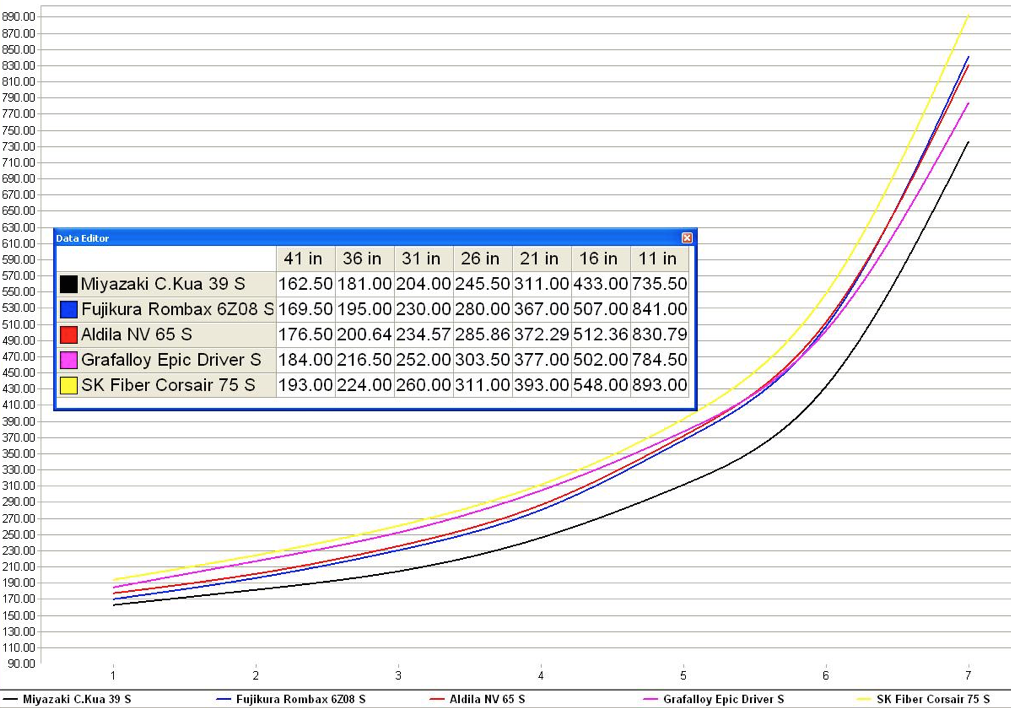
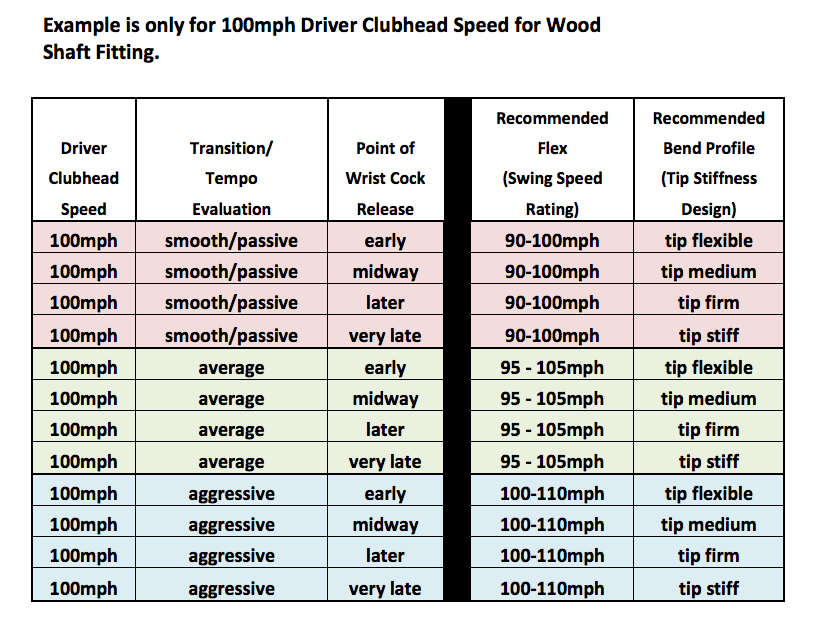
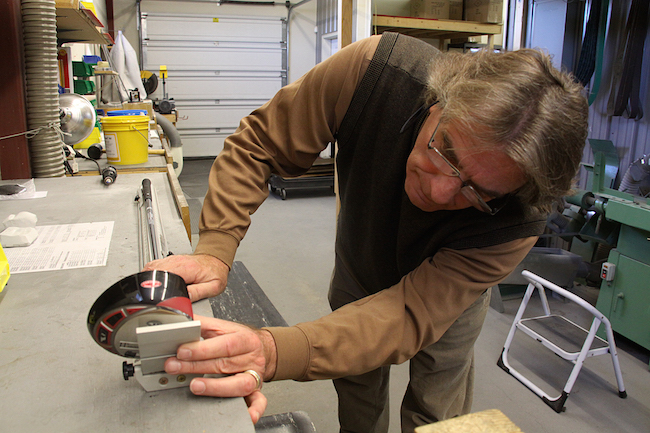



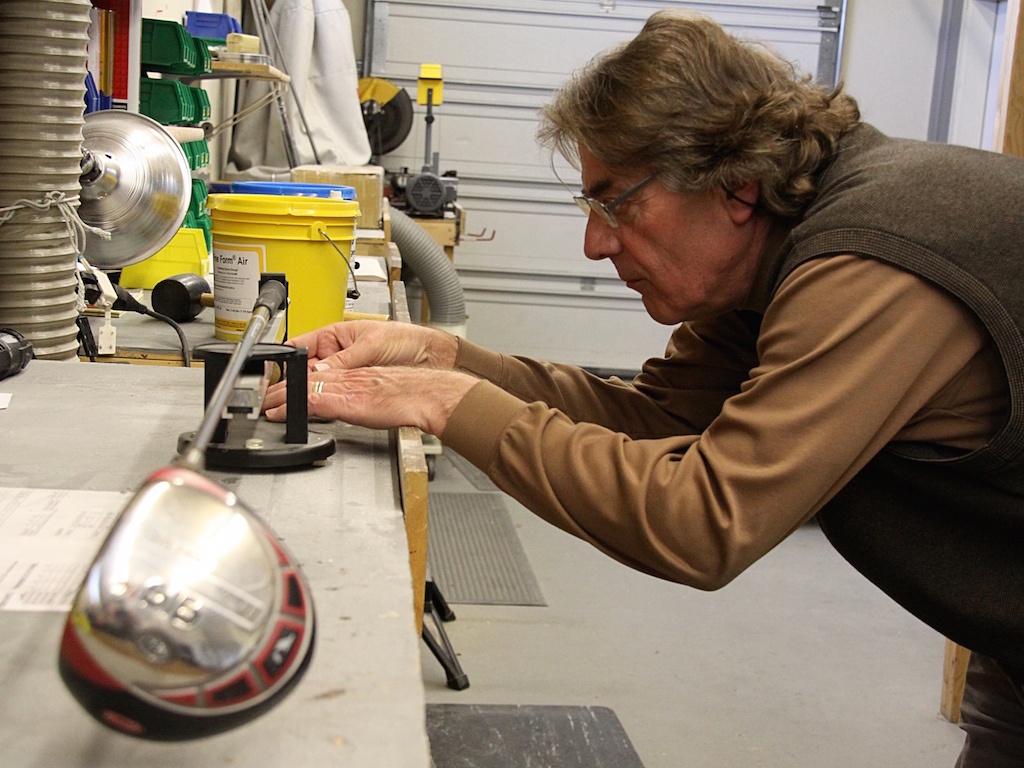
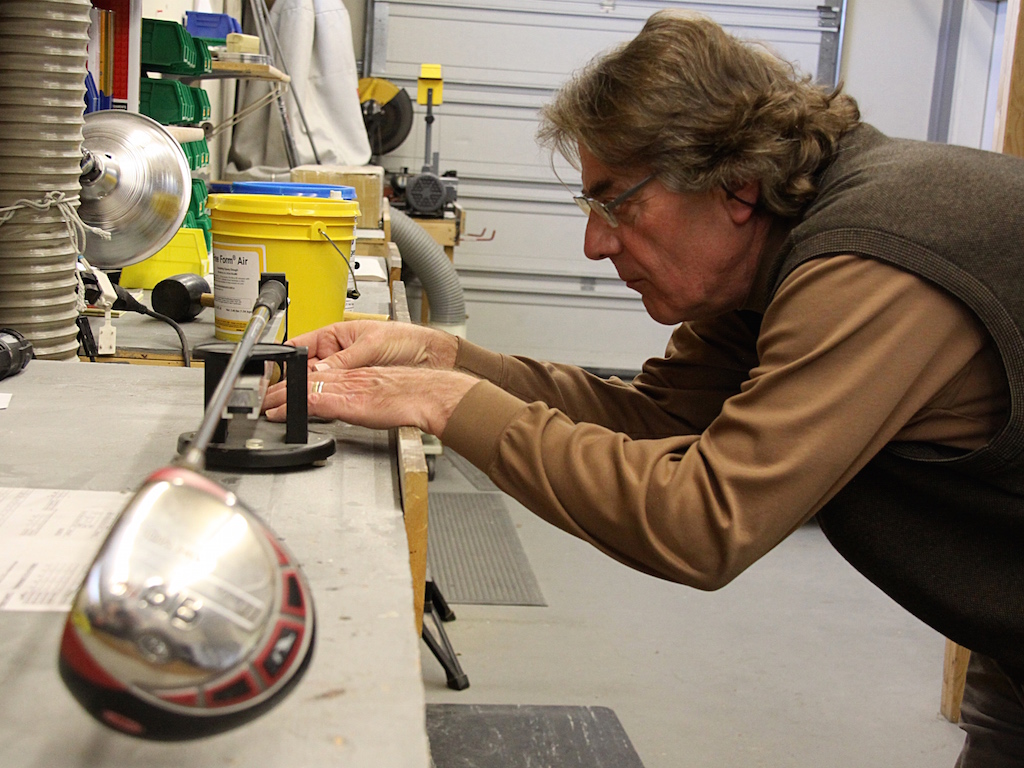
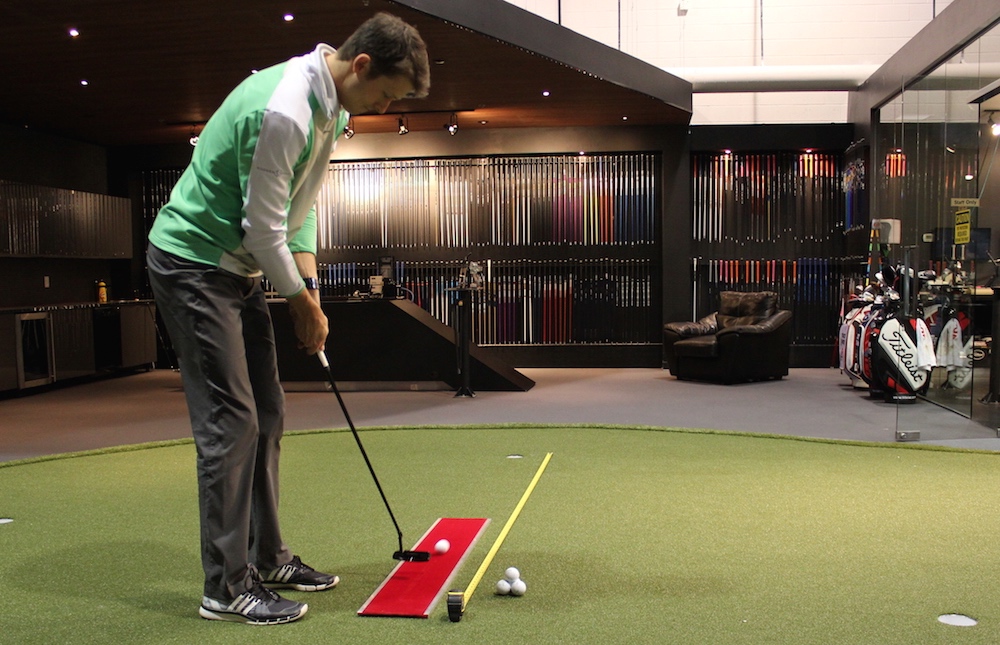
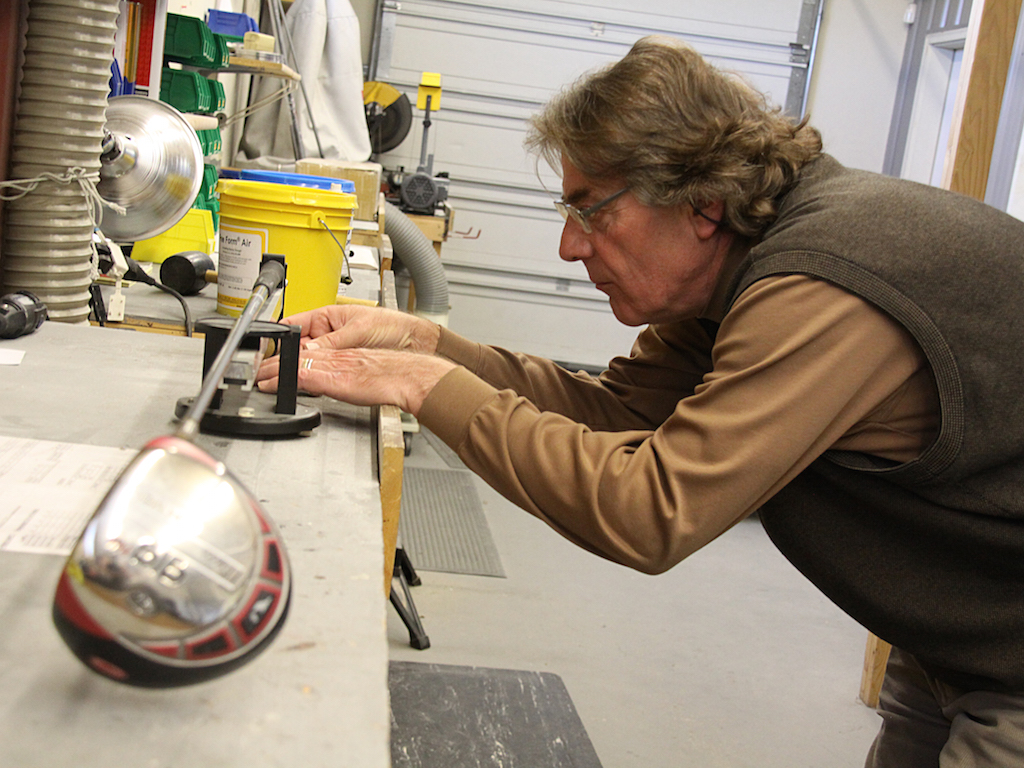
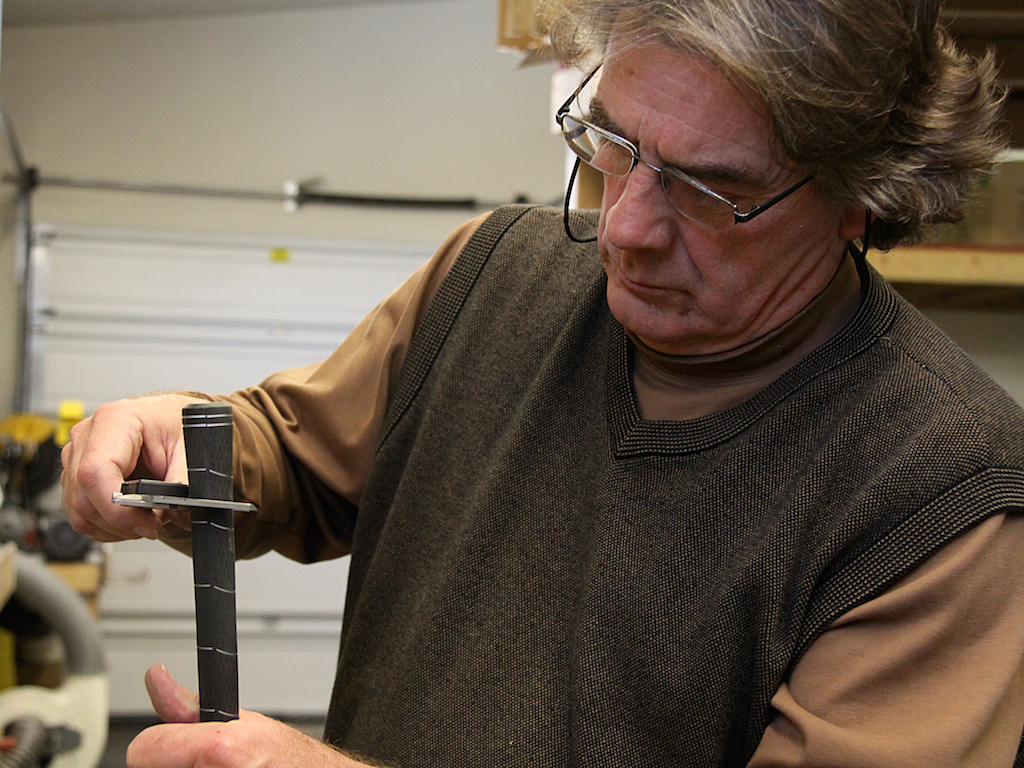












today tv schedule
Oct 7, 2023 at 5:53 pm
I would recommend using a stiffer shaft flex for a higher launch.
Jim M.
Mar 24, 2015 at 10:56 am
Hello Tom,
I’m curious if you have any thoughts or opinions on the accuracy/validity of the Golfworks “MPF Shaft Ratings”? Up to this point it’s the only shaft rating guide that I’ve used, and have found it to be better than going about shaft purchases blind, but not something I’d use and bet the house on.
Since I’m just up in Boulder, maybe we can discuss the fascinating World of Shafts in person someday. Thanks for your articles, really enjoy hearing your perspective!
Tom Wishon
Mar 24, 2015 at 4:53 pm
Jim M
Sorry, but I don’t think very much of the Golfworks MPF shaft ratings. If you take a look at the clubhead speed ranges that they advise, you will see that every R flex is rated for the same 77-92mph driver speed, every S for the same 93-107 swing speed and so on. In doing this they are showing they are not aware of the fact that there is no standard for letter flex as I showed in that bend profile graph in the article. Also, having a 14-15mph swing speed range within the same flex is too large. While there are some areas for which I hold high regard for Golfworks, this is not one of them and the information is not very good for helping golfers find the best shaft for their swing characteristics. That graph you see in the article comes from my Bend Profile software program in which we now have something like 3,000 different shafts in the data base. Many of the clubmakers use this as their guide for empirically comparing the full length stiffness design of shafts so they know much more precisely how one shaft compares to the other. We certainly do not have all the shafts in the data base because this is a monumental task to try to get samples of as many shafts as we can. We certainly cannot buy them all. So we ask the shaft makers to submit samples of their shafts for us to measure and put into the data base. And as happens, some of the shaft makers choose not to participate for whatever reasons. But as it stands now, this software program is the most extensive data base of shaft relative stiffness measurements for clubmakers or golfers to have to be able to make better empirical comparisons.
Jim M.
Mar 25, 2015 at 11:39 am
Thanks for the reply Tom. I was under the impression Golfworks had a bit more sophisticated analysis at play, but as you point out, my impression was false.
I’ve had a couple “clunker” purchases recently, and things are making a lot more sense why now!
Devon
Mar 18, 2015 at 10:54 pm
Hi Tom:
Thanks again so much for posting. Incredibly valuable knowledge. It seems from reading your posts, I have been misunderstanding the role of shaft flex (and it seems I would not be alone!). I have always thought the main consideration in choosing a shaft is the trade-off between distance and accuracy. Want more distance, get a flexible shaft that will bend more and load the club head more like a sling shot catapult. Want more accuracy, get a stiffer shaft that won’t bend and twist as much, and thus provide a more consistently square face at impact. If you have a fast club head speed like I do (115+ for driver), but a miss will put you three fairways over, get the stiffest shaft you can find. When I read your posts, however, I don’t see any mention of stiffness impacting accuracy (hitting it straight). I see mention of stiffness affecting two main areas: 1) trajectory, spin rate, and launch angle (for harder swinging, late releasing folks, which I think I would also be); and 2) an individual preference for the feel of the club either loading or not loading.
Have I been wrong all these years in thinking the main consideration in choosing stiffness is the trade-off of distance and accuracy?
Tom Wishon
Mar 20, 2015 at 3:47 pm
Devon:
Thanks for asking your question so I could have the chance to answer because this is a very good question since it has been said over the years that stiffer means more accurate and flexible means more distance. This concept has its roots from way back, long before serious research was done to find out precisely what the stiffness design of a shaft really does for golfers with different swing characteristics.
It fooled Karsten because those who remember Ping clubs from the 70s and 80s recall that he always used one very stiff flex in all the clubs Ping made back then, from this belief that going very stiff was better because it offered better accuracy. But once he and his engineers discovered the real performance contribution of flex and bend profile, Ping did move away from this original very stiff philosophy to make their clubs with different flexes to better match to the clubhead speeds of golfers.
Where this stiffer is more accurate and flexible is more distance belief came about was from way back when really good players would use different flex shafts – not from regular golfer testing with different stiffnesses. When a high clubhead speed player with a later release uses a MUCH more flexible shaft, the forward bending of the shaft coming into impact not only increases the dynamic loft to result in a higher launch/more spin/higher flight, but a greater amount of forward bending also causes the face to close a little bit too. So these higher speed, late release players would see that they had a tendency to draw or even hook the ball a little more when using a much more flexible shaft. Changing to a stiffer shaft reduced the amount of forward bend on the shaft at impact, which in turn lowered launch/spin/trajectory AND reduced the tendency of the forward bend to close the face. So from this came the belief that stiffer was more accurate.
Not so with avg to regular players because without a higher speed AND later release, the shaft cannot come to impact in a forward bend position to bring about any real change in launch/spin/trajectory or any change in the face angle position.
The concept that more flexible meant more distance came from the fact that when a higher speed, later release player used a more flexible shaft, often times the higher launch resulted in more carry distance, particularly if the player was using too little loft on the driver for his speed and his angle of attack. But here again, this does not work for early to midway release players because the shaft can’t be in a forward bend position at impact with an early to early-midway release and only gets to that point as the release gets a little later and later in the downswing.
So to a small extent, going stiffer can have a small effect on accuracy, but typically only if the player were using a shaft that was too flexible for his speed and downswing force/tempo. Thing is, it is NEVER a good thing to play with a shaft that is stiffer than what your speed and downswing force dictates because that has the effect of making impact feel more dead/boardy and also can affect the golfer’s swing timing, tempo, and release in an adverse manner.
Final point – ACCURACY is far, far more a product of getting the right fit for your length, the shaft weight, the headweight, the face angle. The shaft flex is a distant and only slight contributor to that.
Marty Neighbour
Mar 20, 2015 at 4:49 pm
Great read. Thanks Tom.
James
Mar 18, 2015 at 12:40 am
you could write a book…and that book would be called “Bullsh*t”…..unless you are a low single digit handicap player it doesn’t amount to a hill of beans what kind of shaft you are using. whether its a stiff or extra stiff or you pay $1000.00 for some after market shaft or use a made for shaft or some proprietary shaft. your swing just isn’t going to be consistent enough to see and difference. and they guys whos swings are consistant enough? its really just fine tuning…and I mean FINE tuning…
Tom Wishon
Mar 18, 2015 at 10:41 am
JAMES
I have said many times in my books and articles that golfers have to have a higher clubhead speed and mainly a later release before differences in the shafts’ stiffness design will begin to show an effect on changing the launch angle, trajectory and spin of the shot. So if you assume that only low single digit handicappers have a higher speed with late release, then you’re right – at least from a launch angle, trajectory and spin standpoint of performance related to different shaft stiffness designs.
On the other hand, the stiffness design also can have a very big effect on swing tempo/timing/rhythm and on solidness of impact feel. And these elements of indirect performance from the shaft’s stiffness design can most definitely be perceived by high single digit, middle digit and even some higher handicappers depending on how much golf they have played.
Pretty much most golfers who have played a lot can notice when a shot feels dead or lively when the ball leaves the face. When a shaft is too stiff for a golfer, the feeling of impact in the center of the face becomes more “dead” or “boardy”. And while that won’t affect actual ball speeds or shot characteristics, it most certainly can affect the golfer’s sense of feel to the point that he begins making worse swings and becomes more inconsistent as he fights with this sense of dead impact feel from the shaft being too stiff. This most certainly is an element related to stiffness design that more than just low single digit players can perceive.
Yes, no question, and as I have said before, for the golfers with avg to slower speeds who also have an early to early-midway release, the elements of length, loft, lie, face angle, shaft weight, total weight, swingweight, head design, set makeup and grip size will for sure contribute much more to game improvement than will the stiffness design of the shaft. But even so, this matter of getting the right flex for avg golfers so their sense of timing/rhythm is a little better, and very much so the feeling of impact is more solid are important elements related to the stiffness design that have to be observed for these less skilled players.
Justin
Apr 8, 2015 at 12:37 am
Hi Tom,
I’ve been into clubfitting for a few years now, and am a firm believer in the Common Sense Clubfitting system you developed. My question about this thread, with the importance of flex for less-skilled players, is: how would it matter?
What I mean is, when an early unhinging of the wrist angle happens, doesn’t all of that flex go out the window (so to speak)? Am I correct in believing the shaft flexes and returns to straight well before the clubhead gets to the ball? If so, would the flex really have that much of an effect on “feel”?
Thanks for all you do,
Justin
Dennis
Mar 15, 2015 at 9:28 am
Seems hard to believe you can discuss shaft flex without mentioning splining and whether the shafts were spline for maximum or minimum flex.
Tom Wishon
Mar 15, 2015 at 6:12 pm
Dennis
Like I said in the opening paragraph, one could easily write a book about all the elements related to shafts, shaft flex, bend profile and the fitting thereof. Shaft spine alignment can be important to SOME players depending on their swing characteristics, but by no means is it a critical element for ALL golfers. With the limited space I have for each piece, I have to award a priority to covering information that will be pertinent to the largest segment of golfers and spine alignment/orientation does not fit that priority. FYI so I don’t leave this too much in the dark, I’ll leave you with two basics about it – 1) far fewer shafts today exhibit asymmetry properties for which a spine/asymmetry check and realignment is necessary, 2) shaft spine alignment/orientation becomes more important as the clubhead speed gets higher, as the downswing move becomes more aggressive and as the release becomes later and later in the downswing.
Charles
Mar 13, 2015 at 2:19 pm
I’ve read a lot of articles from club fitters about shaft flex and there are folks saying “You should play the softest shaft you can control”, while other guys say “You should play the stiffest shaft you can get the ball airborne”. I really would like to know your opinion about that. Let’s say that when you are fitting someone you see by the numbers that there are two shafts that match the player’s swing, but one is stiffer than the other, what would be your recommendation? Thanks
Tom Wishon
Mar 13, 2015 at 8:06 pm
CHARLES
Depends on the golfer’s swing characteristics. The higher the clubhead speed, the more forceful the transition and tempo and the later the release, the more it would be better to err on the side of being a little bit too stiff than too flexible. But the lower the speed, the more passive the downswing force and the earlier the release, the better it would be to err on the side of being a little too flexible than too stiff.
Reason is that higher speed, more forceful transition/tempo and later release are all swing characteristics that make the shaft bend more in the swing. So as the player has the ability to bend the shaft more in the swing, the better it would be to err on the side of being a little too stiff. However, fitting the shaft flex/bp always should involve asking the player if he has a preference for the bending feel of the shaft based on experience in the game. if so, then you really have to keep this in mind when making final decisions for the flex/bp. So if the player has preferred shafts that are stiffer than what his swing characteristics might otherwise dictate in a fitting analysis, then you have to err on the side of being a little more stiff. And vice versa too.
Marty
Mar 13, 2015 at 12:20 am
Link to the reference
http://www.wishongolf.com/forum/viewtopic.php?f=1&t=12641
RP Jacobs II
Mar 12, 2015 at 9:22 pm
Great article Tom!!
Stay well my Friend 🙂
Golfingly Yours,
Richard
Sean
Mar 12, 2015 at 3:10 pm
I have three different flexes in my bag: light, regular, and stiff. Works for me.
marty
Mar 14, 2015 at 4:20 am
I thought I was the only weirdo who does this. Hahahahah
Chris C
Mar 12, 2015 at 2:33 pm
I seem to recall that Mr.Wishon has previously suggested that, for those who release the club early, shaft flex is not a significant factor in fitting. I believe that he noted that all of Ping’s early irons came with stiff flex shafts. If I have recollected correctly, Mr. Wishon might actually concur with Mr. Crossfield’s assessment. At least with regards to early releasers.
gunmetal
Mar 12, 2015 at 12:35 am
Tom,
Have you checked out Mark crossfield’s YouTube series on ‘shaft flex does it matter’? Really interesting on how miniscule the differences in performance are even from x to L let alone S to R.
David
Mar 12, 2015 at 6:25 am
Please don’t tell me you’d believe Mark Crossfield over Tom Wishon. Shaft flex obviously matters, Mark and his friends are all low players, try testing on mid-high handicappers and he’d see a noticeable difference.
Rich
Mar 12, 2015 at 8:42 pm
I think Mark Crossfield’s video makes sense. He has the data to back it up as well. Yes they are low markers but there are a lot of guys out there that swing at the same speed as MC (roughly 150 ball speed with a driver) so it would seem quite relevant to me.
Marty
Mar 13, 2015 at 12:02 am
Actually I believe Tom himself has stated that shaft flex matters very little with an early release swing and matters mostly on late to very late release swing. With early release swings, the club has already released and returned back to straight before impact therefore negating the flex
Mat
Mar 12, 2015 at 1:49 pm
I’m just shaking my head over that comment…
Tom Wishon
Mar 13, 2015 at 7:58 pm
Gunmetal
There are two possible ways that the shaft can have an effect on performance. 1) as clubhead speed gets higher AND with it, as the release gets later, the shaft will show an effect on the launch angle, trajectory and spin. But the other side of this is also the fact that as clubhead speed gets slower AND with it, the release happens earlier, the shaft cannot have any real effect on LA, Traj and spin. This is because the early release causes the shaft to go into its forward bending action too soon before impact so by the time the head gets to the ball, the shaft has rebounded back to straight and thus can’t affect LA, Traj and spin. Add to this the fact that slower speed means any potential change in the LA and spin are far less evident.
2) the other way the flex/bend profile can affect performance is when a golfer happens to have a very distinct sense of FEEL for the bending action of the shaft, when the flex/BP is dead on right in the wheelhouse of the golfer’s sense of feel, this means his timing for his release is as good as it can be, which in turn means he will reach his absolute highest clubhead speed as well as best timing and rhythm in the swing.
But not all golfers have a definite sense of feel for the bending action of the shaft. Some do, many don’t. And this is something that while usually more in the realm of better players, it is still possible to find a less skilled but experienced player who does have a real sense of feel for the shaft. In such cases even though the less skilled player may not have the speed or release to make the shaft elicit much effect on the LA, traj and spin, if he does have a very refined sense of feel for the shaft, this means getting him into the right flex/bp helps with his swing tempo, timing and rhythm.